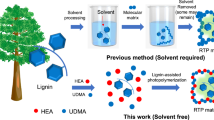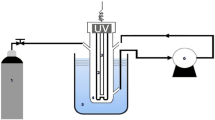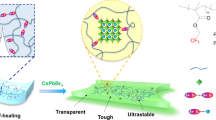Abstract
DISSOLVED yellow organic matter (yellow substance) is ubiquitous in aquatic systems, and is thought to influence the state of ecosystems by affecting the transport and fate of minerals, primary production and, perhaps, the behaviour of aquatic organisms1–4. Although much studied, yellow substance remains chemically and physically ill-defined. It is primarily responsible for the yellow colour of particulate-free natural waters which is generally accepted to be the result of the aqueous extract of decaying plant material. One of the primary constituents of plant material, lignin, is the precursor of a class of stable, yellow-brown, intermediate decay products called humins or humic substance5. Divided into two fractions, humic acid (base soluble) and fulvic acid (acid soluble), these compounds are insoluble in water and are typically analysed as extracts from soil or sediment. Yellow substance is the remaining yellow decay product and is often called soluble humin (dissolved humic acid). There are data, particularly differences in elemental composition and visible and ultraviolet light absorption, however, suggesting that yellow substance is a separate compound with cellulose as its source rather than lignin6.
This is a preview of subscription content, access via your institution
Access options
Subscribe to this journal
Receive 51 print issues and online access
$199.00 per year
only $3.90 per issue
Buy this article
- Purchase on SpringerLink
- Instant access to full article PDF
Prices may be subject to local taxes which are calculated during checkout
Similar content being viewed by others
References
Shapiro, J., Limnol. Oceanogr., 2, 161 (1957).
Prakash, A., Rashid, M. A., Jensen, Arne, and Subba Rao, D. V., Limnol. Oceanogr., 18, 516 (1973).
Rashid, M. A., and Prakash, A., Limnol. Oceanogr., 13, 598 (1968).
Christman, R. F., and Ghassemi, M., J. Am. Wat. Wks Ass., 58, 723 (1966).
Steelnik, C., Proc. Calif. Ass. of Chem. Teachers, 40, 379 (1963).
Kalle, K., Oceanogr. mar. Biol. A. Rev., 4, 91 (1966).
Shapiro, J., J. Am. Wat. Wks Ass., 56, 106Z (1964).
Home, A. J., and Goldman, C. R., Science, 183, 409 (1974).
Jones, G. E., Limnol. Oceanogr., 12, 167 (1967).
Erickson, S. J., J. Phycol., 8, 318 (1972).
Davey, E. W., Morgan, M. J., and Erickson, S. J., Limnol. Oceanogr., 18, 993–997 (1973).
Lewis, A. G., Ramnarine, A., and Evans, M. S., Mar. Biol., 11, 1–4 (1971).
Milanovich, F. P., thesis, Univ. California, Davis, 1974 (Available as Lawrence Livermore Laboratory Report UCRL-51645).
Lederberg, E. M., and Lederberg, J., Genetics, 38, 51 (1953).
Author information
Authors and Affiliations
Rights and permissions
About this article
Cite this article
MILANOVICH, F., WILSON, D. & YEH, Y. Detoxifying effect of yellow substance on E. coli in media containing copper. Nature 253, 460–461 (1975). https://doi.org/10.1038/253460a0
Received:
Revised:
Issue date:
DOI: https://doi.org/10.1038/253460a0
This article is cited by
-
Effects of temperature and chelating agents on cadmium uptake in the American oyster
Bulletin of Environmental Contamination and Toxicology (1982)
-
The influence of organic chelators on the toxicity of copper to embryos of the pacific oyster,Crassostrea gigas
Archives of Environmental Contamination and Toxicology (1981)
-
Ultrastructural observations on the marine fouling diatomAmphora
Helgoländer Meeresuntersuchungen (1980)
-
The biogeochemistry of heavy metals in polluted lakes and streams at Flin Flon, Canada, and a proposed method for limiting heavy-metal pollution of natural waters
Environmental Geology (1978)
-
Microorganisms and heavy metal toxicity
Microbial Ecology (1977)



